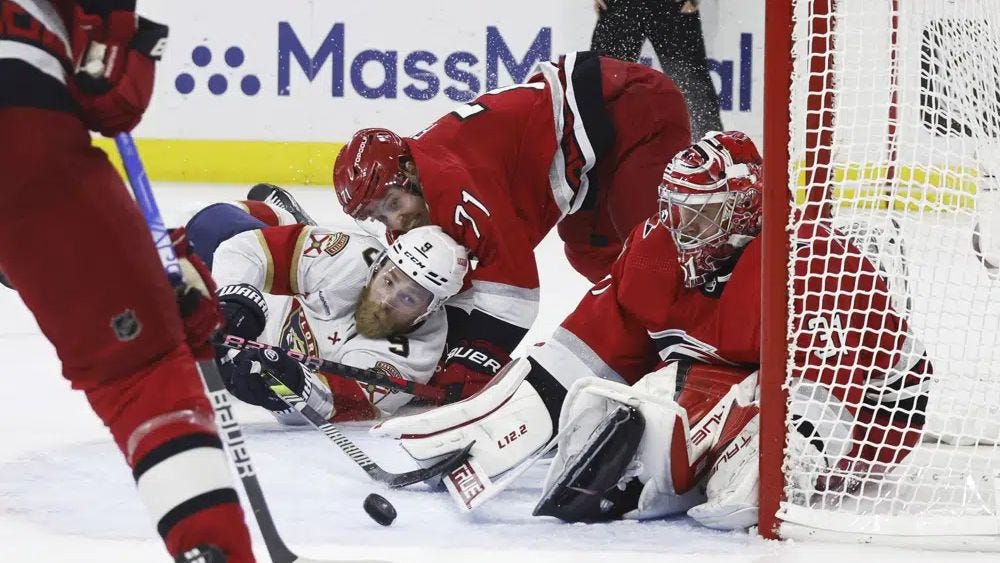Understanding NHL Overtime: Rules, Scenarios, and What Happens Next
Introduction
The NHL’s overtime is one of the most exciting moments in sports. With fast-paced action, wide-open ice, and the constant potential for a game-ending goal, it’s a showcase of skill and strategy. But how exactly does NHL overtime work? And what happens in special situations, like if a player is in the penalty box as overtime begins? This article breaks down the rules of NHL overtime and explains what happens before, during, and after this thrilling period.
1. NHL Overtime Basics
In the regular season, NHL overtime is a five-minute sudden-death period played with 3-on-3 skaters, excluding goalies. The first team to score wins the game, ending overtime immediately.
If no one scores in the five minutes, the game proceeds to a shootout to determine the winner.
The 3-on-3 format is designed to create more scoring chances, emphasizing speed, skill, and creativity.
In the Stanley Cup Playoffs, overtime works differently:
Overtime periods are 20 minutes long and played with traditional 5-on-5 hockey.
There are no shootouts in playoff overtime; teams play as many periods as necessary until a goal is scored.
2. What Happens if a Player is in the Penalty Box Before Overtime?
If a player is serving a penalty when regulation ends, their penalty carries over into overtime. Here's how it works:
The penalized team will start overtime shorthanded (3-on-4 skaters in the regular season or 4-on-5 in the playoffs).
The penalty timer resumes as soon as overtime begins, and once the penalty is over, the player may return to the ice.
In rare cases where one team has two or more players penalized at the start of overtime, the penalized team must skate with at least three players, as NHL rules do not allow fewer than three skaters on the ice.
3. Overtime Power Plays
When a penalty is called in overtime, the penalized team plays shorthanded. The unique 3-on-3 format impacts power-play situations:
A minor penalty results in a 4-on-3 power play for two minutes.
If a penalty occurs while a team is already shorthanded, it creates a 5-on-3 power play, which is extremely rare in overtime.
Once the penalty expires, players rejoin the ice to create the appropriate number of skaters:
A 4-on-3 power play will revert to 3-on-3 once the penalty ends, maintaining the sudden-death format.
In the playoffs, penalties during overtime follow standard 5-on-4 power-play rules, as teams play full-strength hockey during the extra periods.
4. The Shootout
If no goals are scored in regular-season overtime, the game progresses to a shootout.
Each team selects three players to take penalty shots against the opposing goalie.
If the score remains tied after the initial three shooters, the shootout continues in a sudden-death format.
Key points about the shootout:
Teams cannot reuse players until all skaters (excluding goalies) have taken a shot.
The shootout does not apply to playoff games, where games continue with additional overtime periods until a winner emerges.
5. What Happens After Overtime?
In the regular season, the winning team earns two points, while the losing team receives one point if the game was tied at the end of regulation.
In the playoffs, only the winning team advances, regardless of how many overtimes are needed.
If a game ends in a shootout, individual stats from the shootout (such as goals scored by players) do not count toward a player’s regular-season totals. However, the winning goal is credited to the team’s record as a "shootout win."
6. Strategy in Overtime
NHL teams approach overtime with strategies tailored to the 3-on-3 format:
Possession is king. Teams prioritize controlling the puck, even if it means retreating into their defensive zone.
Line changes are critical. With only three skaters on the ice, stamina plays a significant role, so teams aim to keep shifts short.
Risk vs. reward. Defensemen often join the attack to create scoring opportunities, but turnovers can lead to odd-man rushes the other way.
7. Why Overtime Matters
Overtime is more than just a tiebreaker; it’s a test of composure, strategy, and individual brilliance. From incredible breakaway goals to dramatic shootout saves, overtime moments have become some of the most memorable highlights in hockey history.
Conclusion
NHL overtime is a thrilling spectacle that showcases the sport at its finest. Whether it’s the wide-open action of regular-season 3-on-3 play or the marathon overtimes of playoff hockey, every moment is packed with intensity and excitement. Now that you know the rules and nuances, you’ll be able to enjoy overtime hockey with a deeper appreciation for the strategies and stakes involved.


